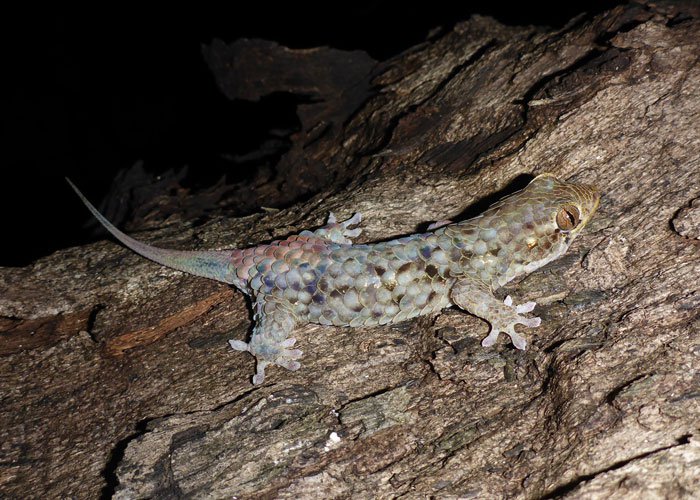Geckolepis megalepis is a newly discovered fish-scale gecko that is taking a unique defense strategy to unbelievable levels. Let's begin with what this defense tactic is. Fish-scale geckos are a subspecies of geckos that are capable of shedding their scales to avoid capture.
Hey, you! Drop it!
Here's how it typically works: when a predator tries to take a bite, some scales in the area of contact slip away. Now the gecko can escape, leaving the predator stuck with no prey and a mouthful of keratin chips. (Keratin is a protein found in our hair and fingernails... and lizard scales. So not as tasty as potato chips. Sadly.)
As a predator of these smaller geckos, the velvet gecko has lost a few meals because of this slippery defense strategy. (Getty Embed)
In a way, this scale-dropping adaptation is similar to what happens with lizards who drop their tails to escape danger. These animals lose, and then regrow, a part of their body to avoid losing something a lot more precious: its life! But usually, fish-scale geckos shed only around areas of direct contact. Why drop everything you got if only losing a few dozen scales will do?
Apparently, the G. megalepis did not get that memo.
Losing scales on a grand scale
This species has the largest scales of any gecko. But it's not too attached to them. Literally. Because at the first sign of an attack, the G. megalepis cuts and runs. It gets as naked as a piece of raw chicken breast and takes off! Wanna see what it looks like? Yeah, we're not sure if you really do. But fortunately, the good folks at PBS have produced this handy dandy GIF to give you an idea.

(PBS News Hour)
Wild stuff, right? It takes a few weeks for the scales to grow back. According to Mark Scherz, a doctoral student at Ludwig Maximilian University in Munich who was the lead author on a new study, the geckos will hide during this time and wait for their scales to regenerate.
Scaly science
Scientists are very excited by what these creatures could mean to research. These geckos drop their scales with no bleeding and no scarring, and then grow back brand-new ones! Understanding how this is possible could do wonders for uncovering breakthroughs in healing and cell regeneration in humans.
 The Geckolepis megalepis is a pretty normal looking little lizard. Until something touches it, that is... (F. Glaw)
The Geckolepis megalepis is a pretty normal looking little lizard. Until something touches it, that is... (F. Glaw)









